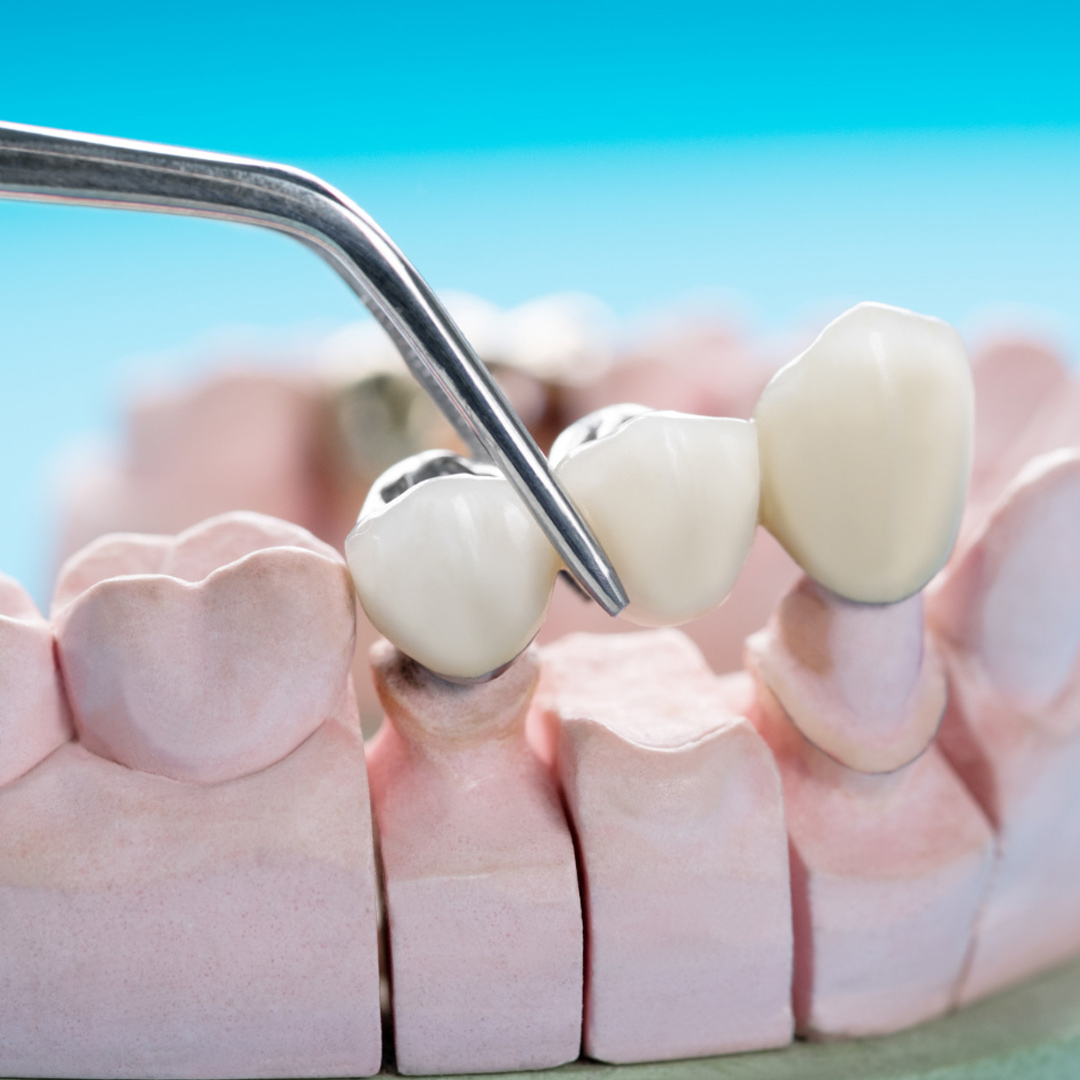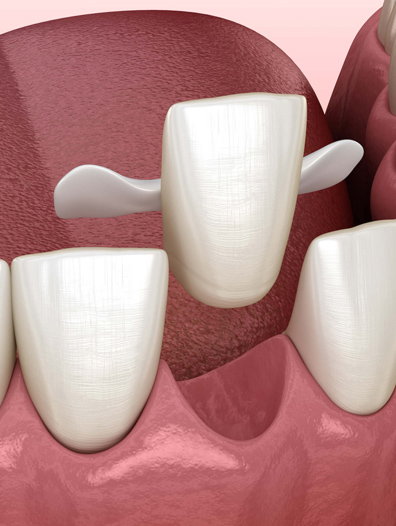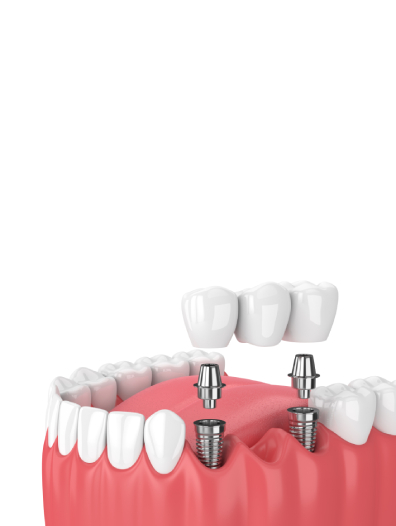Dental Bridge

A Fixed, Reliable Solution for Missing Teeth
Missing teeth can affect more than just your smile—they can disrupt your ability to chew, change the way you speak, and even impact your confidence. At Quality Dental Care, we offer a range of dental bridge options to restore your smile with natural-looking, permanent solutions that don’t rely on removable dentures.
Bridges are an excellent option for many patients who are missing one or more teeth. They are custom-made restorations that fill the gap between teeth, restore function, and prevent neighbouring teeth from shifting.
What Is a Dental Bridge?
A dental bridge is a fixed prosthetic solution used to replace one or more missing teeth. It works by anchoring an artificial tooth (known as a pontic) to the surrounding natural teeth or crowns on either side of the gap.
At Quality Dental Care, we offer two main types of bridges:
- Maryland Bridge
- Fixed Bridge (Traditional Bridge)
Each type has its own advantages and is suited to specific situations. We’ll help you determine the most suitable option based on the location of the gap, the condition of your neighbouring teeth, and your long-term oral health goals.
The Maryland Bridge
Minimal Prep. Maximum Simplicity.
The Maryland Bridge is a conservative solution, often used to replace a single missing front tooth. The pontic is made from porcelain and is held in place by a metal wing, which is cemented to the back of one or both adjacent teeth.
Key Advantages:
- Minimal tooth preparation – No need to remove enamel from adjacent teeth
- Fixed in place – Offers the convenience of a permanent restoration
- More cost-effective – Less expensive than implants or full bridges
- Quick turnaround – Typically completed within 2 weeks

Maryland bridges are best suited for areas with low bite pressure (such as the front teeth) and where the adjacent teeth are healthy and strong. Because the wings are bonded behind the teeth, the aesthetic result is discreet and natural-looking.
The Fixed Bridge
Stronger, More Versatile Support
A Fixed Bridge, also known as a Traditional Bridge, is one of the most commonly used options for replacing a missing tooth or teeth. This involves preparing the two teeth on either side of the gap for crowns, which then support the false tooth fused between them.


Key Advantages:
- Can replace one or multiple teeth
- Offers excellent strength and stability
- Often faster to complete than implants
- Can reinforce adjacent teeth if they require crowns anyway
Fixed bridges are ideal when the neighbouring teeth are already damaged or heavily filled and can benefit from crowns. They provide a solid, fixed solution and restore both function and appearance.
What to Expect During the Procedure
- Consultation and Assessment: We examine your oral health and discuss the best bridge option for your needs.
- Tooth Preparation (for Fixed Bridges): For a Fixed Bridge, the supporting teeth are gently shaped to accommodate crowns. For a Maryland Bridge, little or no preparation is required.
- Impressions: Accurate impressions are taken to ensure the new bridge fits your bite and smile perfectly.
- Temporary Bridge: A temporary restoration is placed while the permanent bridge is being crafted in the lab.
- Final Placement: Once your custom bridge is ready—typically in about two weeks—we cement it into place and make any final adjustments for comfort and fit.
Caring for Your Bridge
With proper care, your bridge can last many years. To keep it in excellent condition:
- Brush and floss daily, especially under the bridge
- Use special flossing tools to clean around the pontic
- Attend regular dental check-ups and hygiene appointments
- Avoid biting hard objects or using your teeth as tools
We’ll guide you on how to maintain your bridge and monitor its condition during your routine visits.
Frequently Asked Questions
With good oral hygiene and regular dental care, bridges can last 10–15 years or more. The longevity depends on the type of bridge and how well it’s maintained.
No. The procedure is done under local anaesthetic, and most patients experience little to no discomfort. Temporary sensitivity after placement is normal and usually short-lived.
Yes. Once your bridge is placed, you can return to eating most foods. We recommend avoiding very hard or sticky items that could dislodge or damage the bridge.
Absolutely. Our bridges are custom-made to match the colour, shape, and contour of your natural teeth, resulting in a seamless appearance.
It depends. Bridges may be a better option if the surrounding teeth need crowns, or if implant surgery isn’t suitable. We’ll discuss both options and help you decide what’s best for your case.
Yes, but we may recommend a Maryland Bridge to preserve the adjacent teeth. If minimal preparation is a priority, that may be the better option for you.
Restore Your Smile with Confidence
If you’re missing a tooth—or multiple teeth—a dental bridge from Quality Dental Care can help you chew, speak, and smile with ease again. Whether you’re considering a Maryland Bridge or a Fixed Bridge, we’ll customise your treatment to suit your needs and deliver a result that’s comfortable, functional, and natural-looking.
Services
- Initial Examination
- Preventive Services
- White Fillings
- Tooth Extraction
- Childrens Dentistry
- Emergency Dental Care
- Cosmetics Services
- Teeth Whitening
- Veneers
- Restorative Services
- Porcelain CEREC Restorations
- Root Canal Treatment
- Dental Crowns
- Dental Bridge
- Dental Implant
- Dentures
- Damaged / Infected Tooth Services
- Tooth Replacement Services
